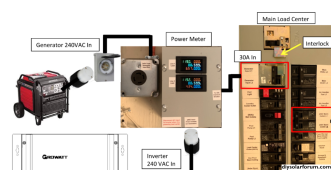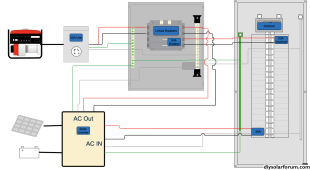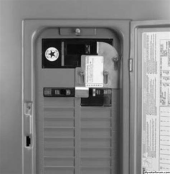Does anyone have any good suggestions for how to have both an outdoor generator inlet and an indoor solar inlet/inverter connection tied into my interlock kit?
Currently, I have an outdoor 50A inlet, which ties in to an interlock on my panel. I would like to start experimenting with going solar purely as a form of backup to begin with, and given my basement is downstairs with no egress, would like some sort of option to be able to flip the interlock on and decide while downstairs if I use generator or solar inverter.
From what I've found, the double pole double throw manual switches that also switch the neutral are VERY expensive, on the range of $800+. An alternative seems to be an RV style ATS, which switches both L1, L2 and the neutral at an oddly reasonable price.
The questions:
Currently, I have an outdoor 50A inlet, which ties in to an interlock on my panel. I would like to start experimenting with going solar purely as a form of backup to begin with, and given my basement is downstairs with no egress, would like some sort of option to be able to flip the interlock on and decide while downstairs if I use generator or solar inverter.
From what I've found, the double pole double throw manual switches that also switch the neutral are VERY expensive, on the range of $800+. An alternative seems to be an RV style ATS, which switches both L1, L2 and the neutral at an oddly reasonable price.
The questions:
- If the interlock kit is bonded neutral in the panel and the generator is floating (as it should be), I assume adding multiple inlets would require switching neutrals on the interlock circuit as I have outlined above? Or could I get by just using a double throw for the 2 hots and having both the inside and outside neutrals bonded at the manual transfer switch? I assume this is no go since there is a chance it backfeeds over neutral to unused inlet.
- Is there any good way to have the inside inlet, which goes to the interlock, also charged by a circuit on the main panel? My concern was that if i flip the interlock on and don't unplug the inverter AC input, which is fed from the panel, then there would be a full circular path, essentially solar inverter powering panel via interlock, panel then powering solar inverter via breaker. I can't think of any way to prevent this that isn't completely reliant on me knowing to turn off the AC input breaker before flipping interlock over. Unless this concern is unfounded?







